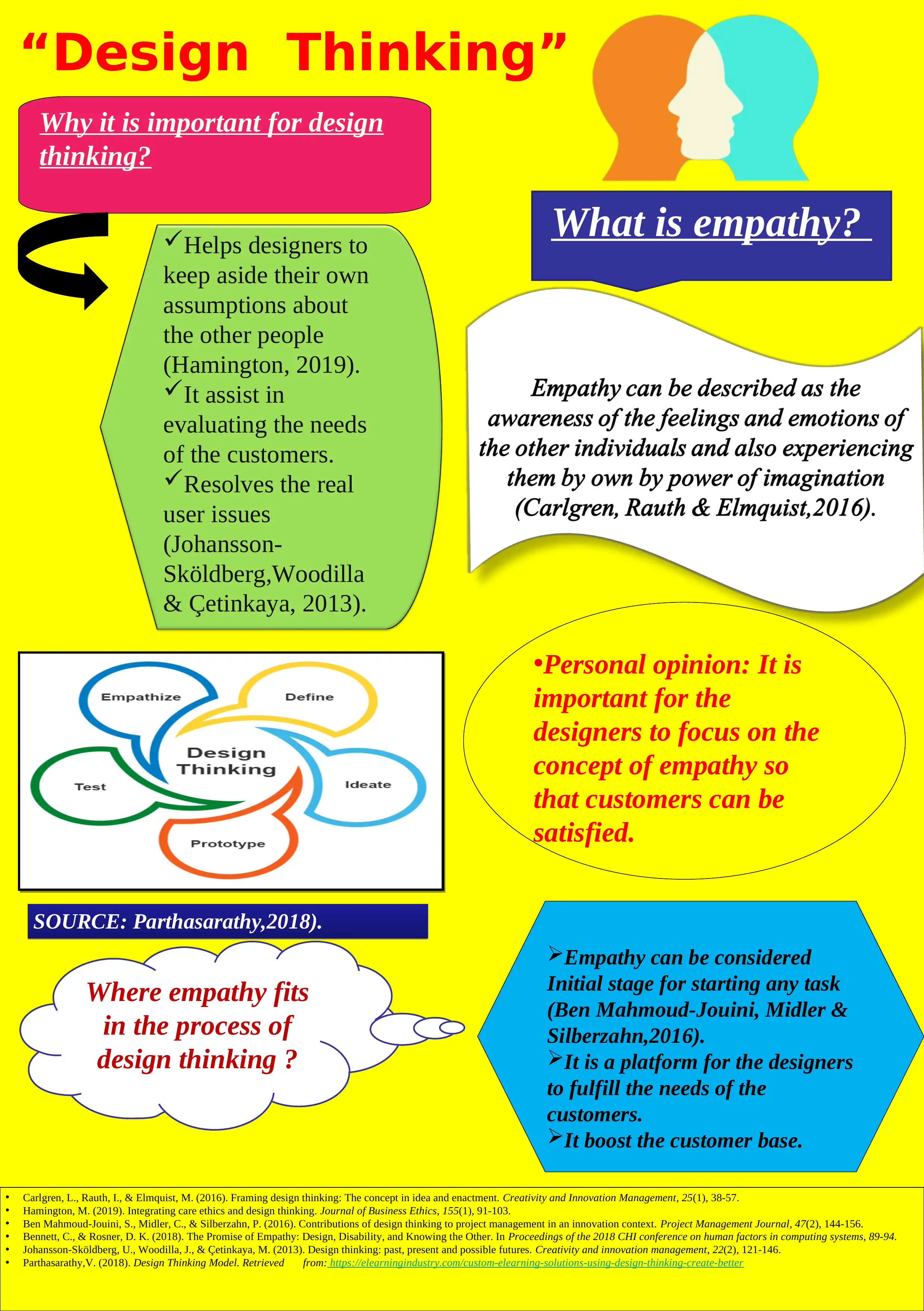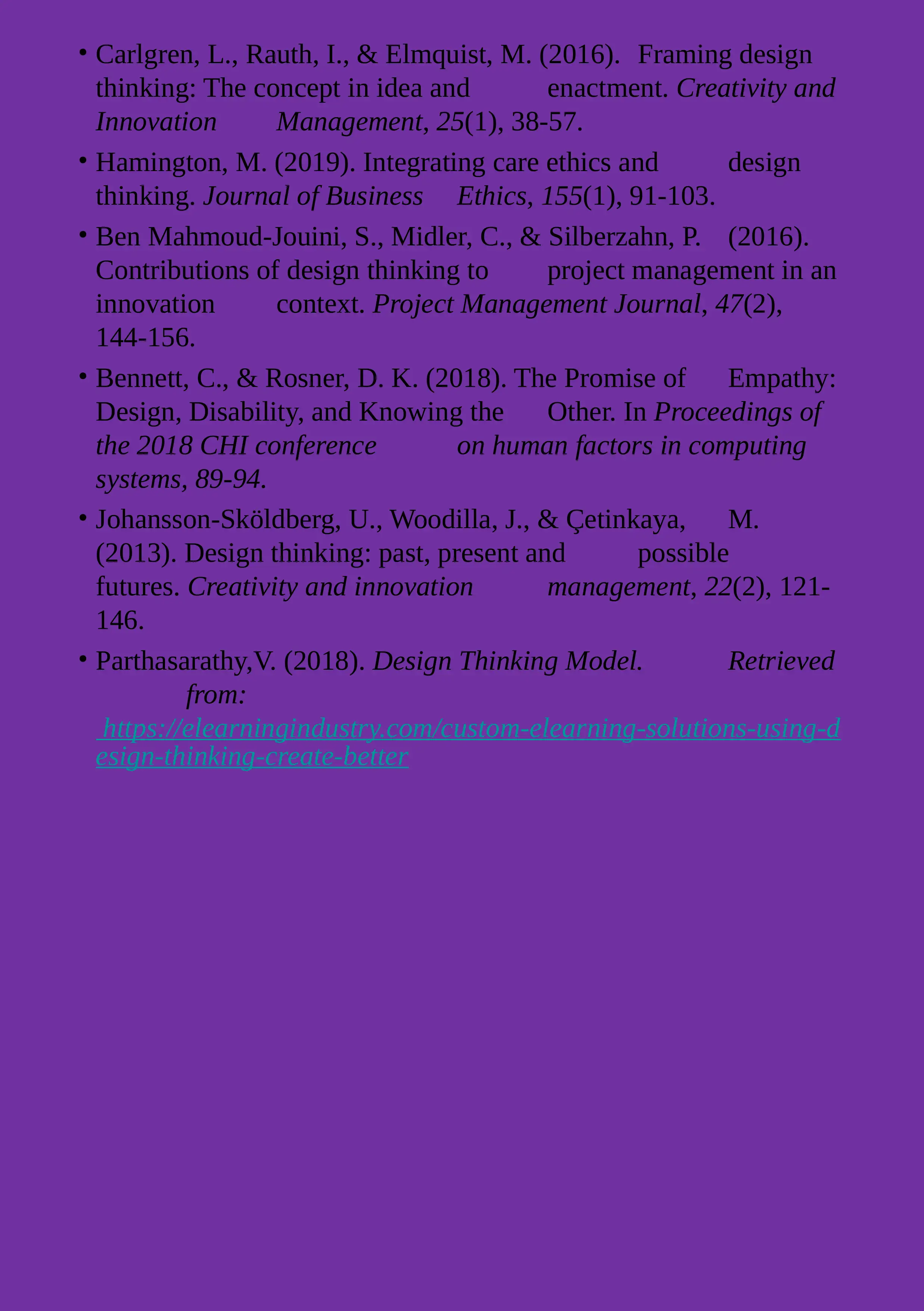Empathy's Significance in Design Thinking: A Poster Project
VerifiedAdded on 2023/01/16
|2
|559
|79
Project
AI Summary
This project involves designing an A2-sized poster to demonstrate visualization, summarization, prioritization, and synthesis skills within the context of design thinking. The poster addresses the question: 'What is Empathy and why is it so important for Design Thinking?' The project requires research using academic literature (minimum of three scholarly references), effective use of visualization techniques, and a clear, logical structure. The poster should define empathy, explain its significance in understanding user needs, and its place within the design thinking process. The aim is to create a self-explanatory and visually engaging communication tool that conveys complex messages effectively. The provided solution highlights the importance of empathy in design thinking, emphasizing its role in understanding customer needs, resolving user issues, and enhancing the customer base, with references to relevant academic sources.
1 out of 2



![[object Object]](/_next/static/media/star-bottom.7253800d.svg)